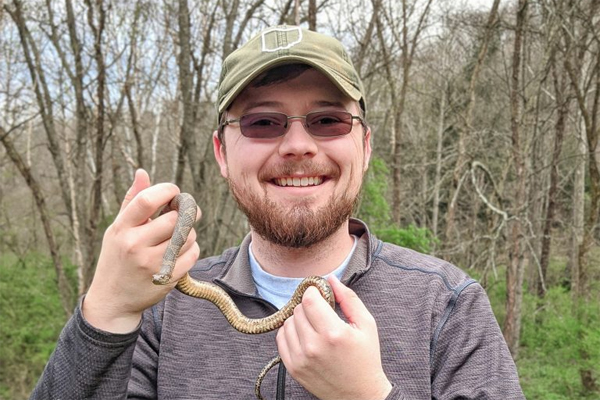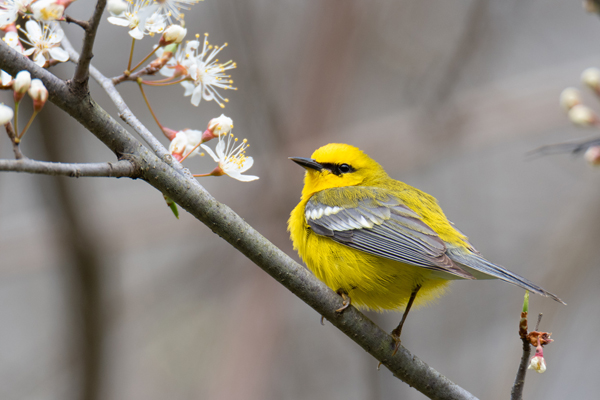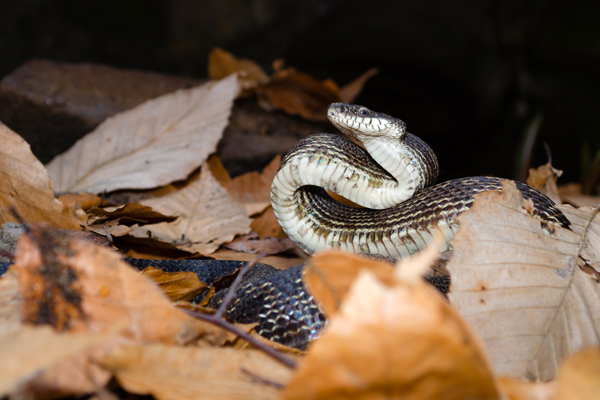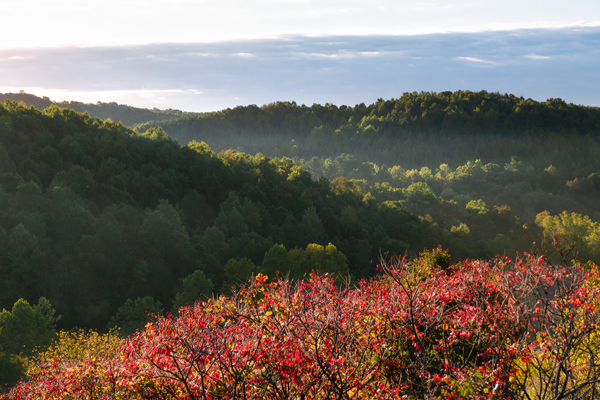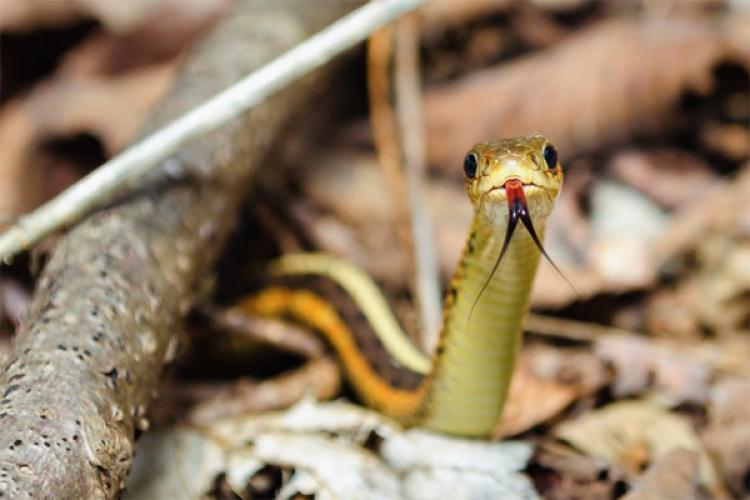
Biology alumnus inspires OHIO Wildlife and Nature Photography Scholarship competition

Ohio University students are invited to submit their best Athens County nature pics to the OHIO Wildlife and Nature Photography Scholarship Competition for a chance to win a first or second-place scholarship prize.
The photo competition, hosted by the Biological Sciences Department, is open to current OHIO undergrad students who are not graduating in the fall of 2022, the spring of 2023, or the summer of 2023.
“When great art meets great science, amazing things can happen,” said contest coordinator Kristina Rezek, a senior majoring in Biological Sciences Wildlife and Conservation in the College of Arts and Sciences. “The goal of this nature photo contest is two-fold. First, we want to celebrate the natural beauty of Athens County, and secondly, we want to reward students for their strong commitment to conservation.
“One of the fundamental lessons we’re taught in our OHIO science courses is how to effectively communicate your findings to the public, press, and policymakers,” Rezek added. “And photography, in this day and age, is at the cornerstone between art and science. In starting this competition, we were inspired by the work and advocacy captured in alumnus Kyle Brooks’ photographs.”
Brooks, a public affairs specialist for the Wayne National Forest, earned a B.S. in Biological Sciences–Wildlife and Conservation in 2017 from the College of Arts and Sciences.
"I have been taking photos for over a decade, both as an amateur and more recently in a professional capacity. My work mainly centers on nature photography — from broad landscapes to intimate portraits of wildlife, small scenes, and more. I occasionally dabble in other genres, including abstract, urban decay, and even photojournalism," Brooks said on his photography website.
"During my time at Ohio University, I heavily involved myself in research, working as a field and laboratory technician with Dr. Maggie Hantak in the Dr. Shawn Kuchta lab, Dr. Anthony Gilbert in the Dr. Donald Miles lab, and with Dr. Viorel Popescu in his lab. I focused primarily on herpetological research, where I developed an appreciation of and interest in biogeography, microhabitat selection, and phylogenetics."
Since graduating, Brooks has shifted his focus to science education, noting on his website, "I am a firm believer that in order for people to care about the environment, they first need to have an understanding of it."
Nature photography tips from Kyle Brooks
“Taking a compelling nature photograph is a combination of skill and being in the right place at the right time,” Brooks said. “There are some basic tips and guidelines that you can learn to really take your photography skills up a notch.”
- The best camera is the one you have. You don’t have to have a fancy camera with expensive lenses to take a good photo. Nearly everyone has a cell phone with a camera nowadays, and those cell phone cameras are surprisingly good in most situations. While there are some situations where a cellphone camera might not cut it — like bird photography — you can take great photos with any camera.
- Look at other artists and photographers for inspiration. And when you do, think about why you like or dislike a piece of art. This will help develop your own artistic eye, which you can use to take more compelling photos.
- Go in the morning and evening for better lighting. Lighting makes or breaks a photo. You could have the most interesting subject framed in the more interesting way, but if the lighting is bad, then that photo will be bad.
- Think about and plan your photo’s composition. Good photography requires intention. It’s what separates a quick snapshot from a compelling photograph. Before you take the photo, carefully plan out the composition. Think about where and how to place your subject in the frame, what to have in the background, and what to have in the foreground. Think about the colors in the frame and whether they clash, contrast, or complement each other.
- Make sure there is nothing distracting in your frame. Before you click the shutter, look around the frame and make sure there’s nothing like sticks or leaves blocking your subject, or something accidentally taking attention away from the parts you want people to look at.
- Make sure your horizon is straight. You can take an otherwise amazing photo, but if the horizon is crooked, the photo just won’t feel right to people. Little details like this add up.
- Make sure your exposure is how you want it. Is the photo too dark or bright? Is your subject properly lit? You can use the exposure slider on your cellphone’s camera to lighten or darken the exposure. If you have a DSLR camera, you can manually adjust your exposure by changing the shutter speed, aperture, and ISO level.
- Experiment with framing your photo in different ways. Get closer to your subject. Get further away from your subject. Put your subject off to the side, then put it in the middle. Get low, get high.
- Post-process your photo, but don’t go overboard. Just as editing is part of the writing process, so too is editing part of the photography process. Camera sensors record a lot of data when a photo is taken, but sometimes the data isn’t displayed just right. Processing the photo — e.g., fixing the white balance, adjusting the exposure as needed, and other such tweaks — is a way to make a final, polished product. But be careful to not go too far with your edits!
- Be picky. Most photos a photographer takes simply aren’t that good. Sometimes the focus is off, or the exposure is wrong, the framing isn’t right, and so on. In fact, most serious photographers aim for around a 10% success rate. You might spend the entire day taking photos, taking hundreds of them, and in the end come out with only five or 10 that you would feel comfortable showing people. And that’s OK. Quality, not quantity!
- Take photos, take more photos, and keep taking photos. As with anything else, practice makes perfect.
How to participate
Participants have the option to submit up to five images (one in each category). The categories are:
- Wildlife – animals found in your backyard or in the wild
- Landscapes – photos of the natural environment, with or without people
- Outdoor Recreation and Adventure – people appreciating the great outdoors
- Macrophotography – extreme closeup showcasing the minute details of your subject
- Conservation – images advocating for the importance of environmental stewardship
Submissions must be received electronically by midnight EST on Friday, Dec. 2, 2022.
Photographs must be the original work of the entrant and a completed/signed submission form must accompany each submission to be eligible for judging. Images submitted will be judged based on environmental content, originality, technical aptitude (composition, lighting, etc.,), representing nature in an authentic way, and overall impact.
If an image contains an identifiable person, that person must sign a completed OHIO Photo Release form. For any image containing a minor person under the age of 18, a parent/guardian must sign the release form.
Find the release forms, rules and the entry form at ohionaturephotocontest.com/.
